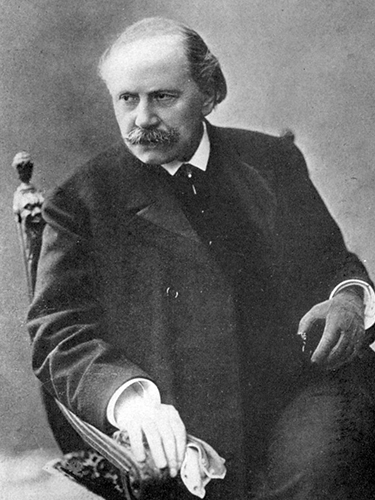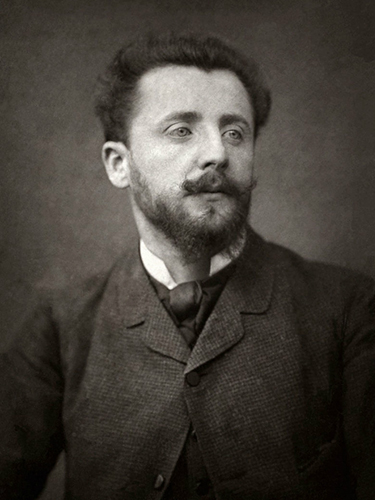
Cendrillon
Welcome to Lyric's learning resources!
This is your all-access pass to the world of opera and musical theater. Scroll down to access the following resources to help you learn more.
Overview
This Google Slides presentation covers essential information your students need to know about the opera.
Act 1: “Faites-vous tres belles” (Now, look your best tonight)
English Translation
Sung by Madame de la Haltière, Noémie, and Dorothée
This scene introduces us to the cruel stepmother and stepsisters. You’ll notice quickly that the stepsisters are not evil. They are very silly and not very smart. Their mother Madame de la Haltière is preparing them to be presented to the King and, hopefully, to catch the eye of Prince Charmant.
Things to listen for:
- The musical phrases differ between the daughters and Madame de la Haltière. Madame’s lines are longer and often connected, but what the sisters sing is short and fast.
- At 1:25, Madame de la Haltière is instructing her daughters in how to act at the ball, and the orchestra plays music more in the style of a royal event instead of the light and bouncy accompaniment they played earlier. How does this music reflect how Madame wants her daughters to act?
Act 1: “Ah! Douce enfant” (Oh! lovely girl!)
English Translation
Sung by the Fairy Godmother
This is the appearance of the Fairy Godmother. She has heard the sad story of Cendrillon, who has now fallen asleep. The Fairy Godmother decides to lend a hand. In this aria, she calls upon spirits to make Cendrillon into the “belle of the ball.”
Things to listen for:
- The Fairy Godmother is a coloratura soprano, which means she sings a lot of very high notes very quickly. By writing in this “high-flying” singing style, Massenet musically creates the character of a floating, magical fairy.
- When the Fairy Godmother sings: “Elle connaisse enfin le bonheur à son tour” or “She will finally know happiness” the music changes. It sounds similar to the swell of the orchestra on the soundtrack of a motion picture. Why do you think this happens at this moment?
Act 2: “La Rigodon du Roy” (The Dance of the King)
English Translation
Sung by the Madame del la Haltière, Noémie, Dorothée, Pandolfe, The Dean, The Master Of Ceremonies & The Prime Minister Chorus
At the ball, there have been a number of dances. We have finally arrived at the dance in celebration of the king. Madame del la Haltière and her daughters are aiming to catch the eye of the Prince, though both daughters are very nervous. Pandolfe is having a terrible time and wants to leave. Everything changes when Cendrillon appears. Everyone stops to watch the mysterious princess. For the first time, Prince Charmant seems happy and excited.
Things to listen for:
- When Pandolfe sings alone (and to himself) the musical style changes (:51). It becomes similar to medieval songs with long sustained notes in the orchestra (also called a drone). Why would Massenet choose to use this older musical style for this moment?
- The moment Cendrillon appears at the ball, all singers becomes very quiet. It is like they are whispering to each other, “Oh Look!” and “What is her name?”
Act 3: “Enfin je suis ici” (At last, I’m here)
English Translation
Sung by Cendrillon
Act three opens with Cendrillon in a panic. It is early in the morning after the ball. Her travels home were long and scary. She lost a glass slipper and hopes that her Fairy Godmother will forgive her. Cendrillon doesn’t know what to do. Should she act like nothing happened that night or should she run away?
Things to listen for:
- The act opens with the orchestra playing loudly and with a repeated three-note pattern. This rhythm sounds like running footsteps or a galloping horse.
- This aria has three sections with three distinct emotions:
- It begins frantically. Cendrillon is frightened of what might happen next, especially when her journey that evening was scary.
- Then it becomes hopeful, she even says that the chimes in the clock tower sounded as if they were wishing her “good luck”
- The aria ends with her feeling sad. The joy of the ball and the comfort she found has vanished.
- How does the composer make the emotions clear between these sections?
Act 1: “Marche des Princesses” (March of the Princesses)
English Translation
Ballet scene performed by the orchestra and chorus
Prince Charmant wants to see every princess in the kingdom to see if they can fit the glass slipper. He must find the “princess” who quickly fled from the ball. The appearance and procession of princesses is a ballet in the opera. You will see princesses of all kinds on stage as they attempt to fit into the slipper.
Things to listen for:
- The melody that begins this piece features the harp and flute. This phrase becomes the “March of the Princesses” theme. Listen for every time this theme returns.
- Throughout this piece, multiple musical themes are introduced. This variety demonstrates the many princesses that are appearing on stage. How many different musical themes do you notice?
The musical highlights are from Sony Classics recording from 1979 which features American mezzo-soprano Frederica von Stade (Cendrillon), Ruth Welting (La Feé, The Fairy Godmother), Jane Berbié (Madame de la Haltière), and Nicolai tenor Gedda (Prince Charmant). The Philharmonia Orchestra and Ambrosian Opera Chorus are conducted by Julius Rudel.
“Enfin je suis ici” comes from Ms. Von Stade’s Sony Classics album “French Opera Arias” with the London Philharmonic Orchestra, conducted by John Pritchard.
Historical and cultural timeline
Learn more about this opera and events in the world at the time it was written.
Photo: Todd Rosenberg

